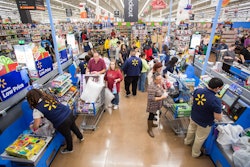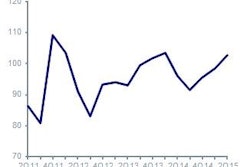
Retailers always want to incite the desires of their target market—that’s nothing new—but now, the tables are turning. Instead of conjuring a blanket advertisement to draw customer interest, it’s the consumers who are providing information to brands about exactly what they want, how they want it and when.
With so much information being transmitted in consumer data, it’s no wonder retailers frequently struggle to stay relevant in an increasingly virtual world. Surely, this is the foremost issue brands must address to survive—and thrive—in the digital age.
The most important element of staying relevant as technology transforms into the Internet of Things (IoT) centers around mobility. Rather than having to walk into a store or surf their computers when they get home, consumers are constantly in the market because they never really turn off. Their devices are always with them, regardless of the time of day and where they happen to be. Modern-day consumers are always on, always connected.
This means that retailers have to be dynamic when it comes to marketing efforts. Brands can no longer rely on a key billboard at the busiest intersection in the city. They can’t expect customers to come to them; they have to come to the customer—on their terms and exactly how best fits within their lifestyle.
So how does a business harness the opportunity that 1.75 billion smartphone owners worldwide now provide for brands?
The answer is simple: virtual beacons. As a digital technology, virtual beacons represent new, proprietary tools that enable context-aware, in-the-moment marketing tailored to each individual customer based on their unique data. Things like locations, favorites, clicks, likes, purchases, weather and time of day all combine to inform the most relevant marketing message possible to be sent at the optimal time.
According to recent research, these kinds of personalized and contextualized campaigns are shown to drive conversion rates up to 10 times higher than standard promotional strategies. They can also result in 52 percent more profitable purchases, a 55 percent increase in repeat sales, and four times the engagement when combining in-store behavior and email.
Instead of sending a promotional email to customers simply based on their browsing preferences or purchase history, for example, contextual technology enables ultimate messaging relevancy. It actually goes so far as to allow an email to change into the most relevant version of itself up to the instant a customer opens her email. For example, let’s say a retailer emails a sandals offer to Ashley, who lives in Florida, but when she opens the message, it’s raining. With contextualization driving marketing, Ashley would open the email to find a promotion for umbrellas within her favorite product line and in her target spending window.
Virtual beacons use smartphone accelerometer and magnetometer measurements for lightning-fast speed and precise accuracy. In tandem with a simple floor plan to pinpoint the location of a user, virtual beacons can transmit the appropriate marketing message in the right place at the right time.
If Kate happens to be browsing the jewelry counter within a retailer’s store, virtual beacons could send her an instant, short, sweet message about a particular jewelry maker’s story. Getting a glimpse into such relevant, in-the-moment insight can make all the difference in giving Kate the ideal encouragement to take the step and actually make a purchase.
Big U.S. brands, like GameStop for example, now offer real-time promotions, information, ratings and reviews to smartphone users in store via physical beacons. It’s this sort of in-the-now relevancy that will skyrocket retailers to the next level and secure their place in the digital world.
With a multitude of retail options cropping up relentlessly, a brand must reach customers on their personal level and through the mediums they prefer in order to gain a competitive edge. Dynamic messaging on a mobile scale is at the center of this phenomenon and virtual beacons make it possible.















